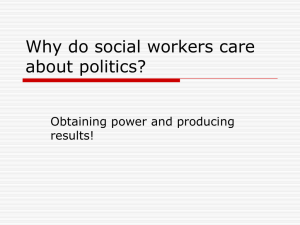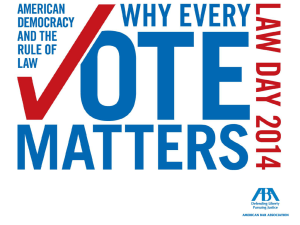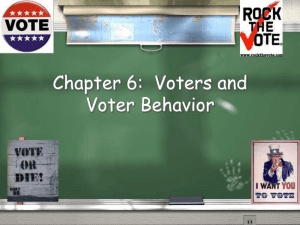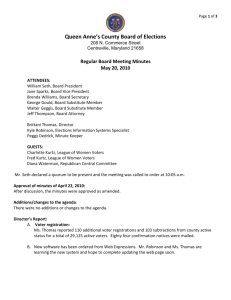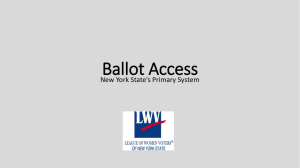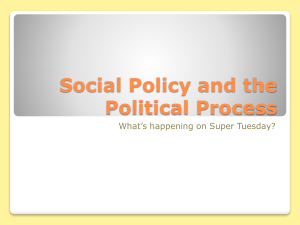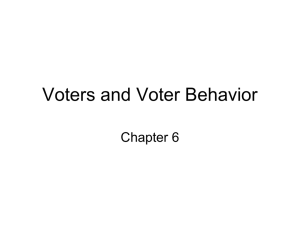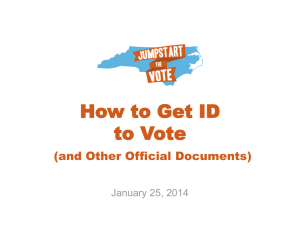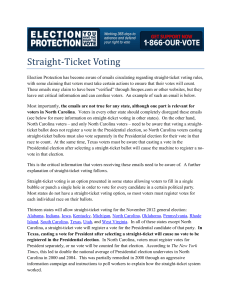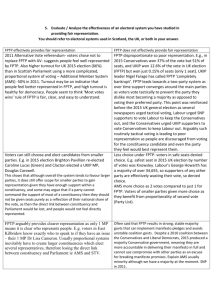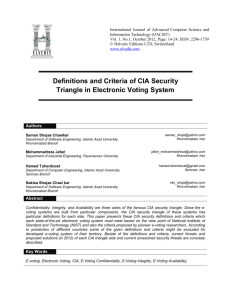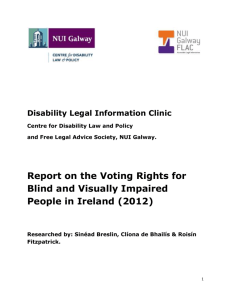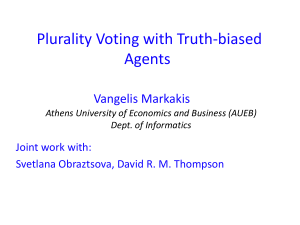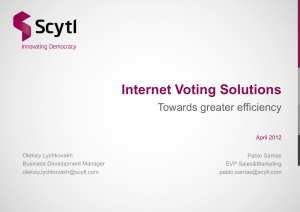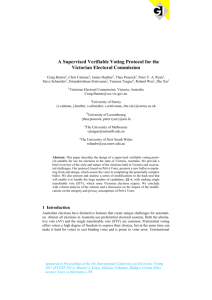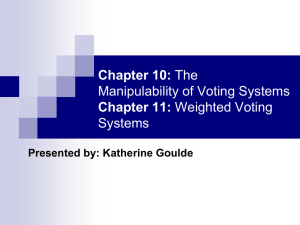Susanne Caarls - 10th International Electoral Affairs Symposium
advertisement
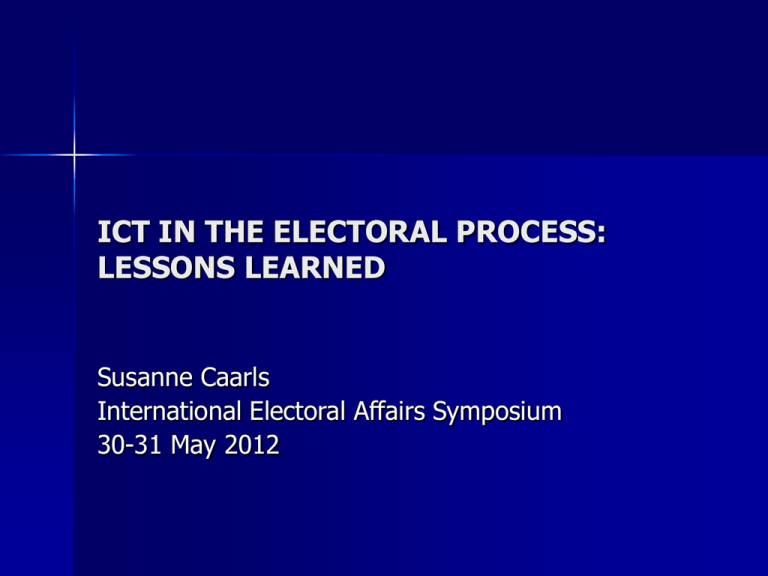
ICT IN THE ELECTORAL PROCESS: LESSONS LEARNED Susanne Caarls International Electoral Affairs Symposium 30-31 May 2012 Content Registration process Voting process Counting process Current discussions Trends Lessons learned Registration process Periodic list Continuous list Civil Registry Registration process Latest developments Biometric features Online registration E-voting process Direct Recording Machines E-voting process Case study: Brazil voters – 130,604,430 85.47% turnout DRE’s – 455,971, managed by 13,000 IT technicians Electoral precincts – 3,105 polling stations – 400,588 workers at the polling stations – 1,665,816 Case Study: Brazil An electronic voting machine is made up of a micro terminal and a voting terminal. In the micro terminal, voters are identified through their voting card numbers. Voters cast their ballots in the voting terminal. Case Study: Brazil At 7:00 a.m. on election day, work begins with the printing of a report referred to as “zerésima”. Case Study: Brazil When voters input their information, the machine will display the offices for which the election is being held, prompting voters to type the number of the candidate of their choice After the appropriate number is typed, the machine will display the name, photograph and party or coalition of the candidate of choice Then confirmation by pushing the green button Case Study: the Netherlands The population register is taken as the basis for compiling the polling lists. Turnout in 2010 Parliament elections: 75,3% (2006 80,4) (9,5 million voters) Over 88% internet users Case study- The Netherlands +97% of the population voted electronically Also experiments with internet voting Case study: the Netherlands Electronic voting is black box voting Voting machine could be hacked in 1 minute Lack in transparency Secrecy of the vote in jeopardy Case Study: the Netherlands Back to paper ballot voting Problems: – Family voting – Problems with counting – Re-counts Case Study: Estonia Voters are registered in the Estonian population register and the population register is taken as the basis for compiling the polling lists. Around 1 million eligible voters 63% uses internet 86% declares income tax through the internet Over 80% has an electronic ID card Case Study: Estonia Electronic ID card is used to identify the voter Case Study: Estonia Voters can vote multiple times Voters can vote via the internet during the advance voting period A voter may change his/her electronic vote The vote which will be counted is the last vote Counting Scanning of ballot papers Discussions Voter Verified Paper Audit Trail Discussions End-to-end verification End-to end verification: voters would after casting his/her vote, receive a 12-digit number and use it after the election, via a website, to check that the vote has been counted. Discussion: content of the vote. Discussions reversible vote Reversible vote: – The voter may vote via the internet as many times as he/she wishes – As above, with the added possibility of the voter going to a polling station (on Election Day). Trends Registration process 1. Use of biometric features in emerging democracies E-voting 2. Use of DRE’s is on the rise, except in Europe 3. In Europe internet voting is on the rise Possible new trend: use of scanning devices Lessons learned 1- trust Trust is needed Explain reasons Be transparent Observers and media need access Lessons learned 2- time Organise and plan well ahead Sufficient time is needed for testing and certification Lessons learned 3procedural and legal matters E-voting is not only about technology Procedures and legislation need to be in place. Lessons learned 4- use information out there From other countries Council of Europe: – Recommendation on legal, operational and technical aspects of e-voting – Guidelines on certification and transparency – E-voting Handbook OSCE/ODIHR election assessment reports IFES Lessons Learned 5- Election Commission needs to be in the driving seat Members of Elections Commissions are sometimes too dependent on others. Conclusion Trust Time Procedural and legal matters Use information out there You need to be in the driving seat!
